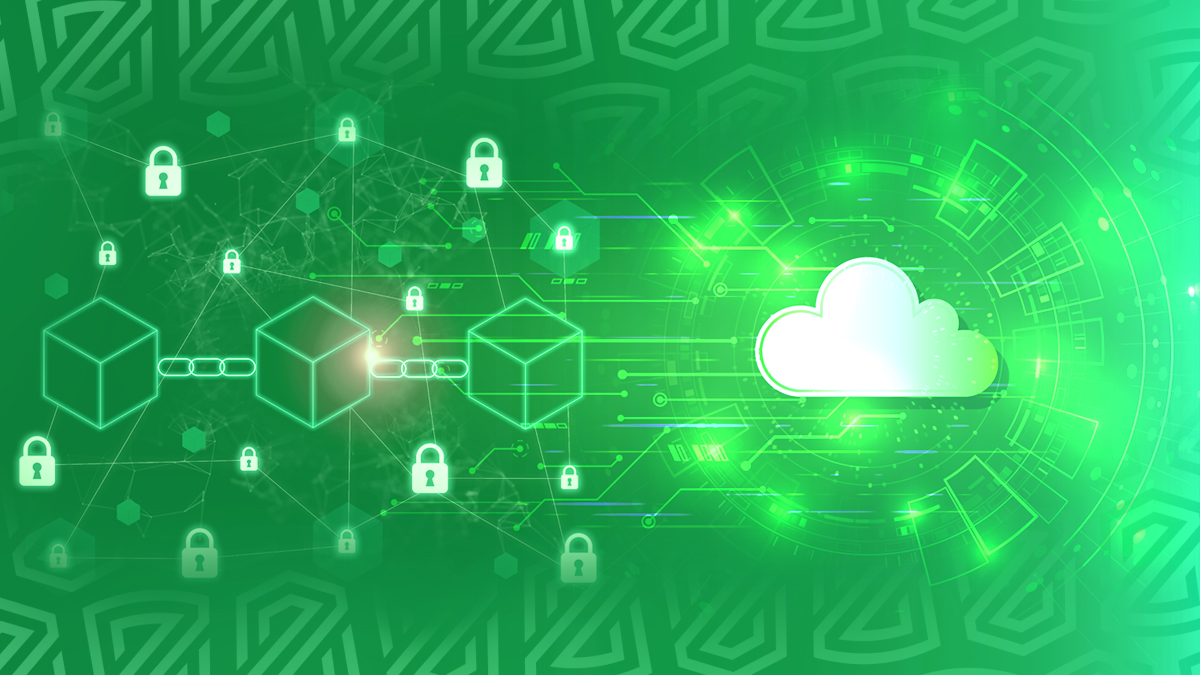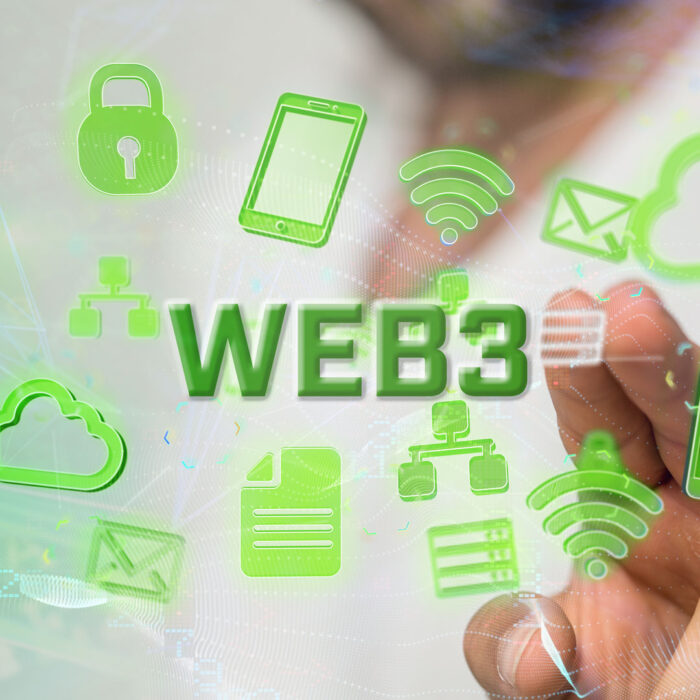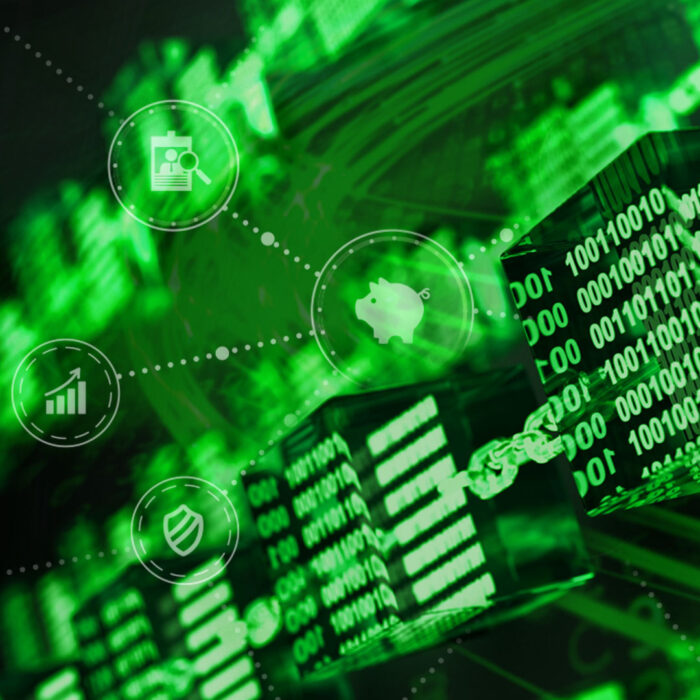
Blockchain advocates have long been excited about distributed ledger technology’s potential for cybersecurity, financial services (especially cross-border payments), the Internet of Things (IoT), real estate, and supply chain management. But as we look ahead to 2023, some other interesting markets are worth watching for the latest trends in blockchain use. Here are four industries I believe will accelerate blockchain adoption to their great advantage . . .
Cloud Services
The worldwide public cloud services market, including Infrastructure as a Service (IaaS), Platform as a Service (PaaS), and Software as a Service (SaaS) generated $408.6 billion in 2021 revenues, according to the International Data Corporation (IDC). Big Tech players “Alphabet, Amazon and Microsoft have together invested almost $120 billion in the past 12 months,” calculates as recent article in The Economist. “Most of it in data centres and the servers that power them.”
While the cloud services industry is still young, this tremendous growth (and high profit margins) drive innovation. Such innovation will include more blockchain technology in 2023.
For example, “cloud storage is another sector that blockchain can electrify and change. Traditionally, cloud storage companies allow users to purchase a certain amount of storage that is generally sold by the terabyte,” explains a recent Investment Bank article. “Blockchain technology provides users a means to store information on a peer-to-peer network. A cloud storage platform could be run by the nodes that help facilitate transactions. The nodes would be giving up storage on their computers to the consumer, but the node owners would be compensated by the consumers for storing their data.”
More broadly for cloud services, blockchain brings greater privacy and security capabilities. “When cloud computing is integrated with blockchain technology, the main problem, security and privacy, gets addressed,” writes Tanvir Zafar for Yahoo! Finance. “Data deletion from one computer does not erase data stored on other devices on a blockchain network. As a result, there is no danger of data loss or alteration. Data on a blockchain is irremovable. It allows for clear documentation of data usage, including where, when, and how it is being used and by whom. Blockchains are governed by codes, eliminating the need for third-party rules, making them a more secure alternative.”
Such elevated privacy, security, and automation can quickly advance cloud computing—not only delivering greater benefits to consumers, but potentially lowering costs and overhead for providers.
Beyond these improvements to today’s cloud services, blockchain can be added as a service offering itself. “In blockchain-based cloud computing, blockchain can be used for secure network management by hosting the blockchain network as Blockchain as a Service (BaaS) in a cloud environment,” suggests Kenny Kleinerman for Ridge. “BaaS supports IoT applications by offering different blockchain-enabled services, such as smart contract services, verification services on user transactions, and cloud blockchain storage.”
I foresee blockchain as a huge piece of cloud services—both infrastructure and offering—in the years ahead!
Government
At ZorroSign, we have already seen many government agencies, departments, and ministries adopting blockchain for operations. “Governments are likely to begin implementing distributed ledger technology (DLT) systems that will replace traditional paper-based systems,” writes Finnegan Pierson for Chetu. “The migration to digital data systems has been going on for quite some time, but DLT has greater advantages that provide greater trust, transparency and security via encryption and validation features.”
Government organizations can readily improve constituent communications and administration with the innovative adoption of blockchains. For example, blockchain can improve:
- Form processing and chain-of-custody tracking of government documents
- Identification and elimination of errors in government documents, plus reduce tampering and detect forgery
- Operational efficiency by eliminating paper-based records (and related equipment and supplies to print, copy, distribute, and store paper documents)
- Cost controls by reducing the expense of manually processing applications, forms, and documentation of all kinds and instead implementing digital records stored on blockchain
In the UAE, for example, H.H. Sheikh Mohammed bin Rashid Al Maktoum’s Digital City Vision for Smart Dubai has been a guiding principle for ZorroSign and other blockchain innovators. For ZorroSign, we share his goal of a paperless life in the UAE by 2030, but Digital Dubai pursues many technologies, as the leaders have found “government effectiveness became increasingly imperative especially in Government to Consumer (G2C) and Government to Government (G2G) services.”
Specific to blockchain, “The Dubai Blockchain strategy will usher in economic opportunity for all sectors in the city, and cement Dubai’s reputation as a global technology leader,” notes the Digital Dubai initiative. “In line with Digital Dubai’s mandate to become a global leader in the smart economy, fueling entrepreneurship and global competitiveness.” Such vision for government is starting in Dubai, but readily seen as critical to future governance in other countries.
Perhaps most exciting, “blockchain technology can end voter fraud,” claims Shivam Arora in an article for Simplilearn. How? With blockchain “people can vote online easily without revealing their identities. Using blockchain, officials can count votes with absolute accuracy, knowing that each ID can be attributed to only one vote. Fraud cannot occur because it is next to impossible with blockchain technology. And, once a vote is added to a ledger, it cannot be changed or erased.” The opportunity to improve voting processes and ensure democratic results will surely keep blockchain in the government focus for years to come.
Law
As blockchain transforms government, so it will transform the law and legal services.
There are many ways blockchain technology is already transforming legal services, writes Steve Glaveski for the NewLaw Academy: “Smart contracts, dispute resolution, IP rights… where The blockchain can support evidence of creation, first use, and rights management, and can track distribution. This ultimately prevents copyright infringement and enforces mitigation via time-stamped copies of work, aiding plaintiffs if appearing before a court. Land and property registries (that today) are notorious for being out of date, decentralized, and restricted. And public service records.”
Again, at ZorroSign we have seen law firms and legal departments start with digital signatures for digital transactions, then quickly expand their use of blockchain to store, track, and manage their contracts and agreements. Contract lifecycle management (or CLM) solutions help attorneys to manage the complex and evolving nature of contracts—making them more efficient at producing, executing, and upholding contractual agreements. Leveraging blockchain, ZorroSign manages contracts as we manage all digital documents, providing digital signatures to quickly execute legally binding contracts, a patented Z-Forensics token to ensure contract immutability, and a document management system built on blockchain for immutable storage.
Consensys, a software foundry providing decentralized software services and apps on Ethereum, believes blockchain can make the legal industry more accessible and more transparent. “Lawyers can leverage blockchain technology to streamline and simplify their transactional work, digitally sign and immutably store legal agreements,” claims a Consensys article. And “blockchain-based contracts have baked-in compliance, no surprises, and no room for misinterpretation.”
As transactions and records move to digital workflows, digital signing ceremonies, and digital storage, blockchain will be a boon to law firms and legal department in 2023 and beyond.
Identity
Finally, with the move to digital commerce and communications, our individual identity—as mapped to digital worlds—becomes increasingly important to control and authenticate.
“Identity systems are currently flawed in a number of ways. They are porous, operate in isolation and prone to error,” adds Finnegan Pierson again in Chetu. “Blockchain systems can solve these problems and provide a single source to verify identity and assets. Blockchain identity can also offer a type of ‘self-sovereignty’ that hasn’t existed before.”
This desire for control over one’s personal information—and digital data across platforms—lies at the heart of web3. While web3 starts with blockchain, its ambition and scope will spread far across the Internet, metaverses, and shared networks.
“Identification and credentials are easier for everyone to work with when they’re digital: vaccination cards, academic qualifications, occupational licenses, employee ID and more. But this highly personal information must remain private and secure,” says IBM. “Governments, businesses and educational institutions are turning to blockchain as a proven way to enable a secure and trusted infrastructure and improve services.”
“One of the most problematic results of the internet age has been identity security,” notes Nathan Reiff for Investopedia. “Blockchain technology has already demonstrated the potential for transforming the way that online identity management takes place. The applications for blockchain and identity management are wide-ranging.”
From cloud services, cybersecurity, and IT to financial services, government, healthcare, legal services, real estate, supply chains, and other industries, blockchain is changing how we do business, share information, and identify ourselves.
These trends are just the start, however, and the opportunities for blockchain to improve the privacy and security of our digital data will flourish in the years ahead.
Contact us to learn more . . . or start a free trial to put our blockchain software for digital signatures to the test!



